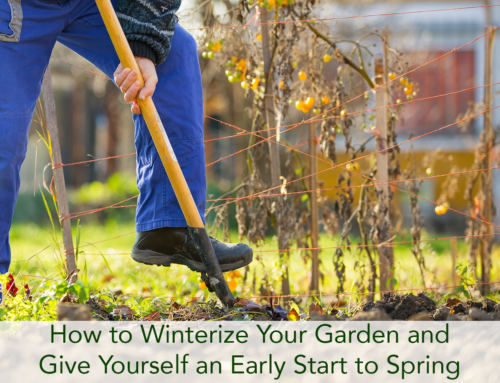A great garden requires a lot of preparation and maintenance to develop. Before you get into the frenzy of seed sowing and growing, here are some tips you should take to prepare your garden for a successful season!

Keep your gardening tools with blades sharp to improve their cutting.
Clean and Sharpen Gardening Tools
Maintaining your gardening tools is an important first step for preparing your garden for spring. Clean tools work more effectively, which means they’re easier to use and will last you longer, saving you money. Cleaning them will also help prevent spreading disease around your garden.
Use hot water, strong detergent, and a scourer to give bladed tools a thorough clean. Keeping blades sharp will also improve cutting, which is easier on you and your plants. Hand tools, like spades, trowels, rakes, and hoes will also benefit from a good cleaning. Give those a good scrape, as they usually are the ones to take the hardest beating each year, and use a wire brush to give a thorough cleaning with detergent and hot water.
Remove Weeds
Removing weeds is an essential step to preparing your garden for spring. Tidying up the space will let your flowers and plants grow to their fullest potential!
Hand weeding is an effective way to deal with broadleaf weeds. Regardless, you’ll want to make sure you pull the weeds out while they’re young to prevent them from spreading. A helpful tip: weed when the soil is moist as they’ll come out easier. Make sure you don’t place any weeds in your compost pile because the seeds will germinate and cause more problems later on.
Prune Plants
Pruning is the perfect chore for early spring as most shrubs and trees are dormant. Make sure you know each of your plants well before you go in with pruning. Some shrubs shouldn’t be pruned in spring. Spring bloomers, like lilacs, should be pruned after they bloom.
If you’re feeling a little iffy about the prospect of pruning, don’t worry. Begin by going around your garden and removing the 5 D’s: dying, dead, damaged, disfigured, and diseased wood. This will help you narrow your focus and make your garden look good as new (and your plants will be happy, too!).
Prepare the Soil
Once the soil is workable, it’s time to prepare your garden beds! The winter can lead to your soil becoming compact, so you’ll want to loosen it back up. Use a sharp spade or tiller to work the soil to a depth of up to 14 inches. To re-energize your soil, do a soil test to check the nutrients and pH levels. Once you figure that out, you’ll be able to decide what you’d like to add or adjust with compost and organic amendments.

Mulch is anything that lays on top of the soil and can include pine needles, wood chips, or bark.
Add Mulch
The last step is to add mulch to your garden. Mulching is very important for seasonal reasons. It greatly conserves the soil’s water as it keeps the wind and sun off of it. It’s also a wonderful insulator and protects the soil from wide temperature swings.
Most anything can act as mulch (mulch by definition is anything laying on top of the soil!) such as pine needles, wood chips, or bark. If you want to take your garden to the next level, Hi-Octane mulches will help you out. Hi-Octane mulches are amped up mulches in that they have food value added to them, like nitrogen and phosphorus. These will “feed” the plant whenever it’s watered or it rains.
Hi-Octane mulches are an excellent way to “step up” your plant’s growth and beauty while creating excellent soil. And it looks great, too!
Kicking Off Spring Gardening Right
Preparing your garden for spring is an exciting time! But before you get back into the swing of things, visit us at Beaver Lakes in Montrose, Colorado, first. We have custom soils, organic soil amendments, and the perfect mulches to add to your garden so your plants will grow big and strong.






